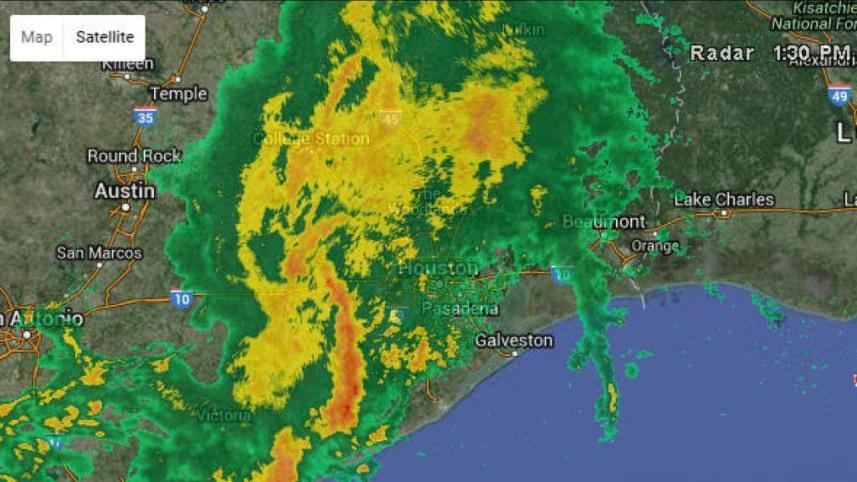In part 1, I observed that there are two obstacles that might seem to face teachers wanting to use recent extreme weather, like Hurricane Harvey, in teaching about climate change: the complexities and uncertainties involved in attributing specific weather events to global climate change on the one hand, and the tendency of the opponents of teaching climate change to portray those complexities and uncertainties as admissions of ignorance and error.
But these are obstacles that can be surmounted. So let me walk you through how I might teach about extreme weather and climate change using Hurricane Harvey as a hook.
Good lessons should be hands-on and data-driven, what teachers call project-based or problem-based learning (PBL for short). I would use a tried-and-true PBL strategy: start with the problem, go to the data, and guide understanding through inquiry.
These lessons usually start with an engaging activity which draws the students into a scientific problem. In this case, I would introduce the lesson with a question, Did climate change cause Hurricane Harvey? I would then have a conversation about the impact the hurricane had on the community and how communities prepare for hurricanes. It’s important to empathize with students, and I would not want to put them in embarrassing situations that might produce anxiety, so I would want to tread lightly, but listening is a key ingredient to an inquiry lesson. I would listen for statements by the students that I could use to guide the discussion towards weather patterns and the challenges of predicting specific events.
But the discussion is not the lesson. It is just the first step, engaging students with the problem. From there I would have to challenge them to figure out how we can answer the question I initially posed. How do hurricanes develop, and what influences their strength, duration, and frequency? How have these influences changed over the last century, and how does this relate to climate change? Was Hurricane Harvey unprecedented? What other events are important to compare to Harvey, and what patterns do we see when we look at large data sets? How do scientists make connections between observations and causal factors? Are the patterns we see sufficient to support the claim of causation? How can we break this problem up so that we can determine the influence of climate change on the conditions that affect hurricane strength, duration, and frequency?
But these questions are not the ones I would need to ask the students myself. These questions are those that I want to guide the students to ask themselves to complete the lesson.
I would need to clearly identify specific learning objectives (LO) ahead of time, such as students will examine patterns of extreme weather events and explore how the frequency of events may be changing due to climate change. This LO would need to be connected to measurable learning outcomes, such as students will utilize data sets to construct a graph of major rainfall events in the Houston area over the past century, and students will construct models to predict the frequency of future weather using historical records.
I would have to find the resources needed for the lesson, such as accessible data sets, news articles or videos, and curricular resources to support learning such as appropriate websites, data interpretation tools such as simulations, and even passages of the textbook.
I would need to develop appropriate questions to guide the students through the initial discussion, their exploration of curricular materials, and the processes of constructing their graphs and models. These questions would drive the students to find the information they need, so that I could guide the students through the use of inquiry, not direct instruction. This allows the students to construct their understanding from the experience of exploring the data and information.
I would also need to align the lesson and the assessment instruments I would use, and with curriculum standards. And most likely, I would have to get approval of the lesson from a school or district administrator, such as my principal or a curriculum specialist.

from the Texas Water Development Board
I didn’t have the opportunity to teach about Hurricane Harvey when I was in the classroom, but I’ve taught similar PBL lessons. I know it’s not easy. Teachers face a number of real challenges in developing and delivering these lessons. Getting access to usable data is not always easy, and finding the tools to interpret it properly is often even harder. Time constraints and bureaucracy can severely complicate the challenge. But that doesn’t mean that they aren’t worth the effort. In my experience, one well-done PBL lesson can produce deeper understandings and more profound experiences than several more traditional lectures.
NCSEteach is here to help. We will be working to help identify, promote, and develop good curricula and tools. We will also work to provide effective professional development in the near future. We’ll be talking about it more in this blog space, but if you know any teachers who need help now, please contact me at hoge@ncse.com.



